An imitation of the natural progression of daylight over the course of the day via artificial lighting is harmless in terms of health as it is predetermined by nature. Shutting daylight from rooms for VDU work should be avoided. Glare-free screens as well as a suitable arrangement and orientation of VDU workstations usually render this possible (see chapter "Lighting of offices and rooms with VDU workstations").
Human Centric Lighting and lighting design
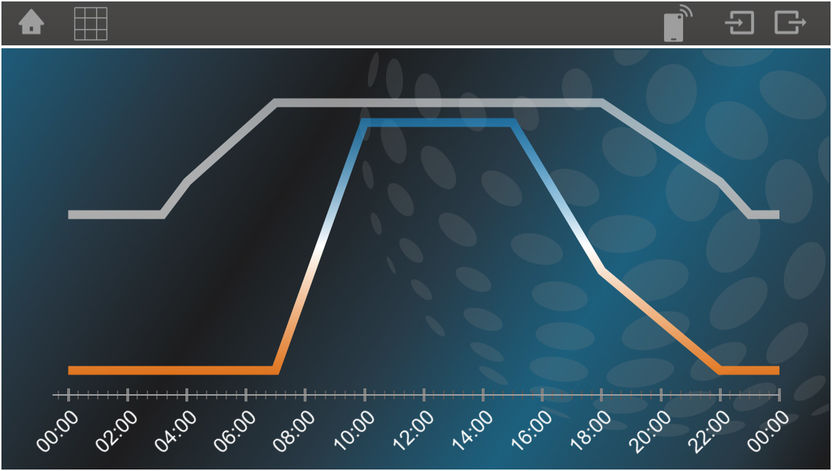
(a) Graphic representation of the light progression
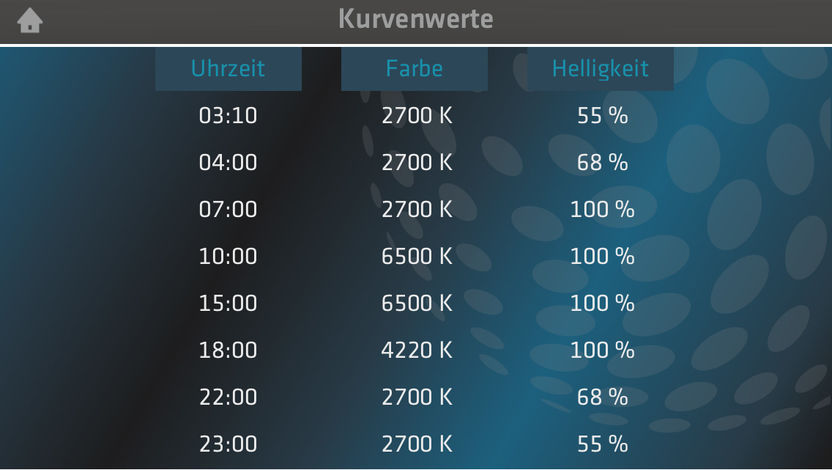
(b) Table of sampling points of the curve depicted on the left
Figure 3.44: Example for a melanopically effective lighting progression over the day
In many cases, however, the incidence of daylight in the buildings where we spend our time is little or non-existent. Here, balanced artificial lighting which takes the changing colour temperature and intensity of daylight into account, can help synchronise the inner clock correctly. The direction from which the light enters the eye as well as the extent of the light source are determining factors for this (see figure). It is always important for the impact of melanopically effective lighting to employ the right light at the right time. While it is possible to increase alertness using light with an increased blue portion, continuous lighting with such light in the end does not yield the desired effect. Artificial lighting should rather provide support at the right time, but always permit sufficient relaxation phases.
Only through careful, diligent planning, can the positive effects of light on human beings be without adverse effects to users. An artificial light source, however, can never completely copy the properties of daylight, but serves to provide important substitutes. LED technology with its diverse control facilities and finely tunable colour temperatures or spectra can provide great support for this in application.
Requirements for light control
It is also essential to plan light control systems capable of realising complex light progressions. As a minimum, a suitable control device must facilitate the following function:
Lighting control with a temporal progression of varying brightness levels and light colours according to a circadian schedule (circadian sequence).
In some applications, however, further requirements for control device and user interface exist. The following is often required:
the possibility for the user to adjust the circadian progression individually
the possibility to store several circadian progressions to select from
stepless manual brightness adjustment
stepless manual light colour adjustment
calling-up preset light scenes
the possibility for individual adjustment of light scenes
Only this way, planning specifications for melanopic lighting can be implemented effectively.
An example for a circadian progression of this nature is depicted in figure. The progression depicted is oriented to natural daylight and is particularly suited to synchronise the inner clock of persons remaining in rooms without daylight over extended periods of time and to support their circadian rhythm.
Requirements for luminaires
In the same way, there are specific requirements for the luminaires to be employed. For light to be melanopically active, the spectral distribution must be similar to daylight. In order to facilitate imitating the day’s progression, the light colour of a luminaire must be steplessly adjustable – tunable – and cover the entire colour temperature range necessary. As the extent of a light source, besides spectrum and intensity, is also decisive for the melanopic efficiency of light (see figure), luminaires should be designed as secondary light sources. Planar luminaires or indirect systems are suitable for distributing the light extensively in the upper portion of the room and the ceiling (see figure). A system like that can also be supplemented by direct components (with fixed colour temperature where appropriate). Naturally, it is important to ensure that support for the visual task at each workstation, as well as all other visual quality criteria, are observed at all times.
Requirements for the room
In order to support the efficiency of planar lights and indirect systems, the room architecture should also be appropriate. In contrast to the requirements for most visual tasks, melanopic light efficiency depends on vertical illuminance Ev and the illuminance at the user’s eye. Colouring and reflectance values within the room should support this distribution (see example in figure).
Example for a lighting installation with recessed planar luminaires in an office space
The light colour is steplessly adjustable from 3.000 K to 6.000 K with the melanopic efficiency varying by a factor of 2. The figures show the radiometric spectrum of the luminaire at the specified colour temperature as well as the melanopic efficiency spectrum weighted with the melanopic efficiency function. For comparison, the radiometric spectrum as well as the melanopic efficiency spectrum of an incandescent lamp (2.700 K) are depicted.
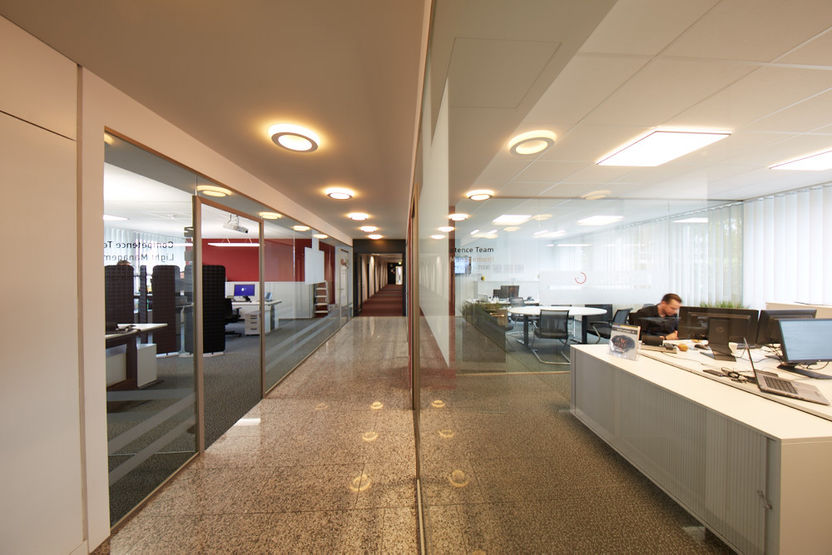
(a) Office space with melanopically effective lighting, at 3.000 K
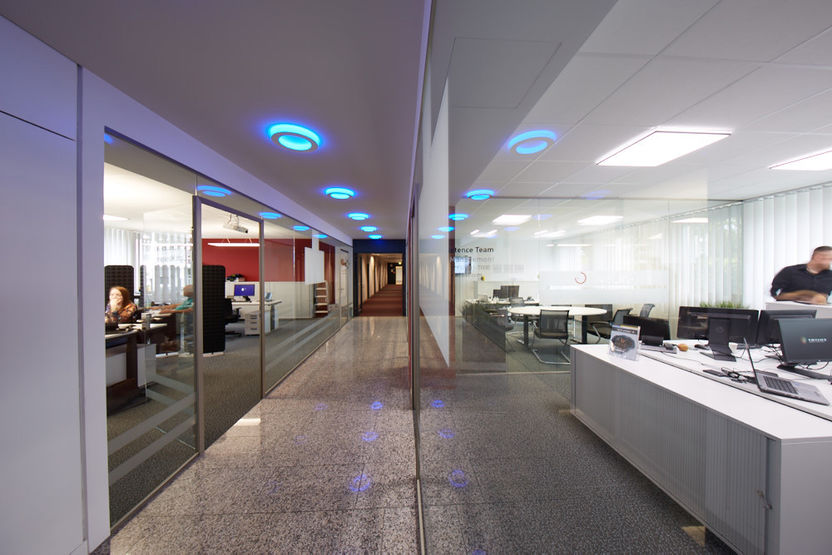
(b) ... at 6.000 K
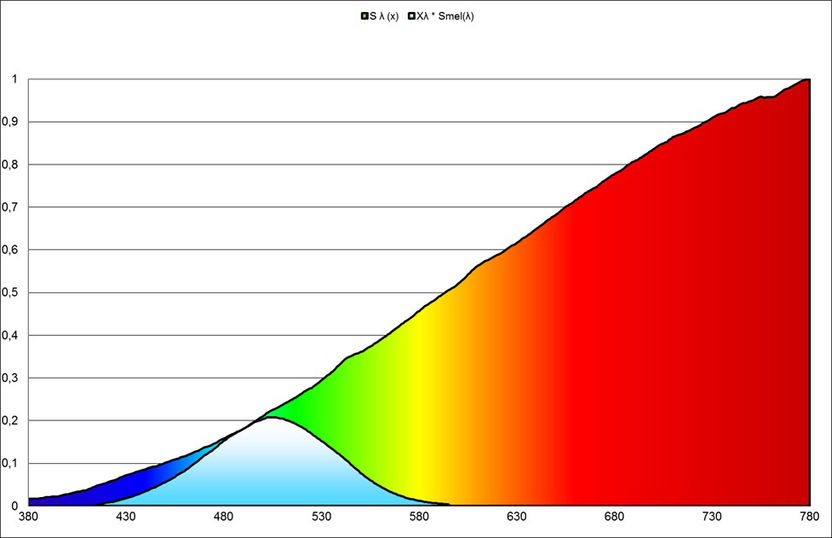
(c) incandescent lamp, 2.700 K, amel = 0,40
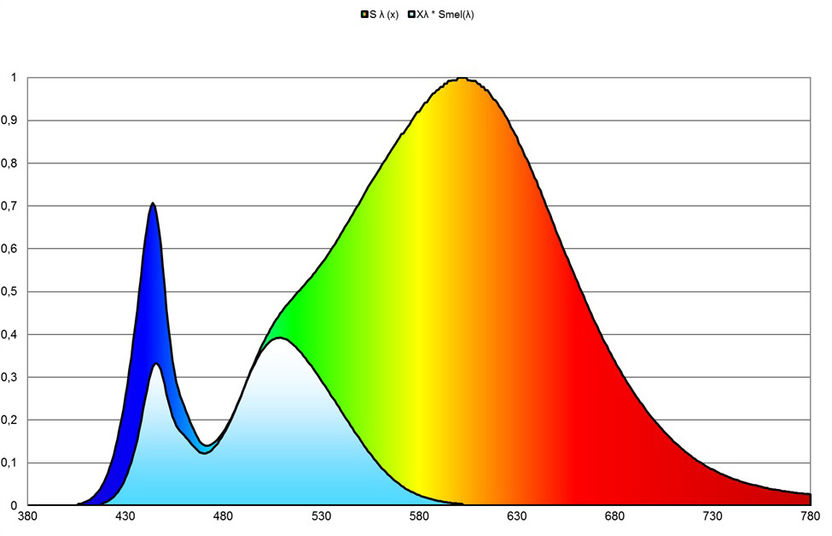
(d) LED, 3.000 K, amel = 0,42
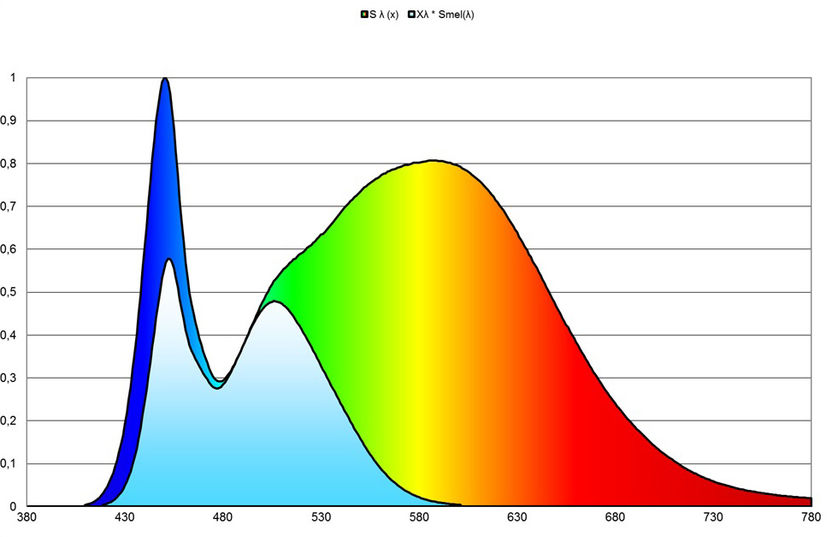
(e) LED, 4.000 K, amel = 0,56
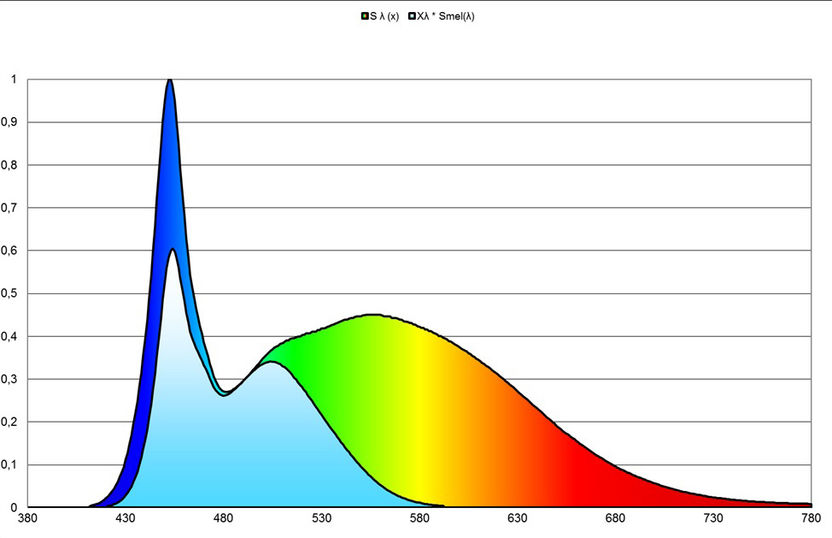
(f) LED, 6.000 K, amel = 0,84
Figure 3.45: Radiometric spectrum and melanopically effective spectrum of a LED luminaire at various colour temperatures. The melanopic efficiency factor amel refers to a 32-year-old user.